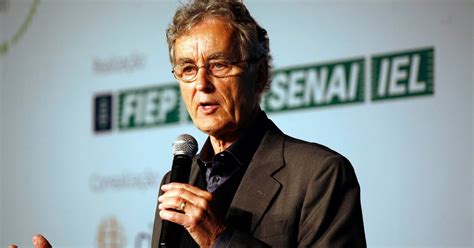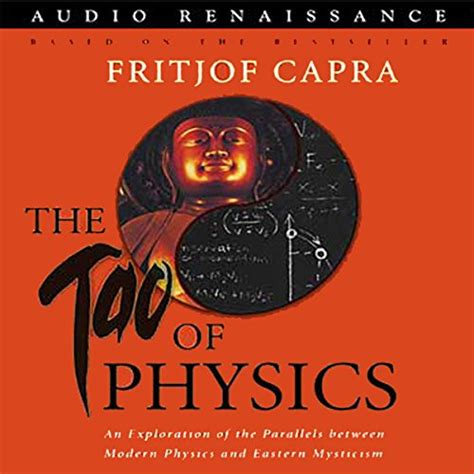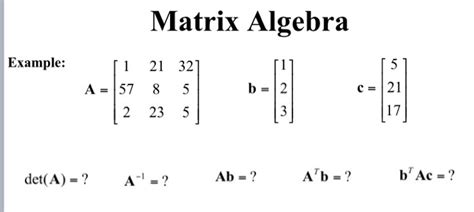|
home | what's new | other sites | contact | about |
||||
|
Word Gems exploring self-realization, sacred personhood, and full humanity
Quantum Mechanics
return to "Quantum Mechanics" main-page
website: https://www.fritjofcapra.net/ Excerpts from chapter 18 of Dr. Fritjof's book, The Tao Of Physics
… our exploration of the world view suggested by modern physics has repeatedly shown that the idea of ‘basic building blocks’ of matter is no longer tenable. In the past, this concept was extremely successful in explaining the physical world in terms of a few atoms; the structures of the atoms in terms of a few nuclei surrounded by electrons; and finally, the structures of the nuclei in terms of two nuclear ‘building blocks’, the proton and the neutron. Thus atoms, nuclei and hadrons were, in turn, considered to be ‘elementary particles’. None of them, however, fulfilled that expectation. Each time, these particles turned out to be composite structures themselves, and physicists hoped that the next generation of constituents would finally reveal themselves as the ultimate components of matter. On the other hand, the theories of atomic and subatomic physics made the existence of elementary particles increasingly unlikely. They revealed a basic interconnection of matter, showing that energy of motion can be transformed into mass, and suggesting that particles are processes rather than objects. All these developments strongly indicated that the simple mechanistic picture of basic building blocks had to be abandoned, and yet many physicists are still reluctant to do so. The age-old tradition of explaining complex structures by breaking them down into simpler constituents is so deeply ingrained in Western thought that the search for these basic components is still going on. There is, however, a radically different school of thought in particle physics which starts from the idea that nature cannot be reduced to fundamental entities, such as elementary particles or fundamental fields. It has to be understood entirely through its self-consistency, with its components being consistent both with one another and with themselves. This idea has arisen in the context of S-matrix theory and is known as the ‘bootstrap’ hypothesis. Its originator and main advocate is Geoffrey Chew who, on the one hand, has developed the idea into a general ‘bootstrap’ philosophy of nature and, on the other, has used it (in collaboration with other physicists) to construct specific models of particles formulated in S-matrix language. Chew has described the bootstrap hypothesis in several articles which provide the basis for the following presentation. The bootstrap philosophy constitutes the final rejection of the mechanistic world view in modern physics. Newton’s universe was constructed from a set of basic entities with certain fundamental properties, which had been created by God and thus were not amenable to further analysis. In one way or another, this notion was implicit in all theories of natural science until the bootstrap hypothesis stated explicitly that the world cannot be understood as an assemblage of entities which cannot be analysed further. In the new world view, the universe is seen as a dynamic web of interrelated events. None of the properties of any part of this web is fundamental; they all follow from the properties of the other parts, and the overall consistency of their mutual interrelations determines the structure of the entire web. Thus, the bootstrap philosophy represents the culmination of a view of nature that arose in quantum theory with the realization of an essential and universal interrelationship, acquired its dynamic content in relativity theory, and was formulated in terms of reaction probabilities in S-matrix theory. At the same time, this view of nature came ever closer to the Eastern world view and is now in harmony with Eastern thought, both in its general philosophy and in its specific picture of matter. The bootstrap hypothesis not only denies the existence of fundamental constituents of matter, but accepts no fundamental entities whatsoever-no fundamental laws, equations or principles-and thus abandons another idea which has been an essential part of natural science for hundreds of years. The notion of fundamental laws of nature was derived from the belief in a divine lawgiver which was deeply rooted in the Judaeo-Christian tradition. In the words of Thomas Aquinas: “There is a certain Eternal Law, to wit, Reason, existing in the mind of Cod and governing the whole universe.” This notion of an eternal, divine law of nature greatly influenced Western philosophy and science. Descartes wrote about the ‘laws which God has put into nature’, and Newton believed that the highest aim of his scientific work was to give evidence of the ‘laws impressed upon nature by God’. To discover the ultimate fundamental laws of nature remained the aim of natural scientists for the three centuries following Newton. In modern physics, a very different attitude has now developed. Physicists have come to see that all their theories of natural phenomena, including the ‘laws’ they describe, are creations of the human mind; properties of our conceptual map of reality, rather than of reality itself. This conceptual scheme is necessarily limited and approximate, as are all the scientific theories and ‘laws of nature’ it contains. All natural phenomena are ultimately interconnected, and in order to explain any one of them we need to understand all the others, which is obviously impossible. What makes science so successful is the discovery that approximations are possible. If one is satisfied with an approximate ‘understanding’ of nature, one can describe selected groups of phenomena in this way, neglecting other phenomena which are less relevant. Thus one can explain many phenomena in terms of a few, and consequently understand different aspects of nature in an approximate way without having to understand everything at once. This is the scientific method; all scientific theories and models are approximations to the true nature of things, but the error involved in the approximation is often small enough to make such an approach meaningful... In the classical view, these quantities were regarded as fundamental constants of nature which did not require any further explanation. In the modern view, their role of ‘fundamental constants’ is seen as temporary and reflecting the limitations of the present theories. According to the bootstrap philosophy, they should be explained, one by one, in future theories as the accuracy and scope of these theories increase. Thus the ideal situation should be approached, but may never be reached, where the theory does not contain any unexplained ‘fundamental’ constants, and where all its ‘laws’ follow from the requirement of overall self-consistency… For the Taoist sages, all phenomena in the world were part of the cosmic Way-the Tao-and the laws followed by the Tao were not laid down by any divine lawgiver, but were inherent in its nature. Thus we read in the Tao Te Ching: “Man follows the laws of earth; Earth follows the laws of heaven; Heaven follows the laws of Tao; Tao follows the laws of its intrinsic nature.” Joseph Needham, in his thorough study of Chinese science and civilization, discusses at great length how the Western concept of fundamental laws of nature, with its original implication of a divine lawgiver, has no counterpart in Chinese thought. ‘In the Chinese world view’, Needham writes, ‘the harmonious cooperation of all beings arose, not from the orders of a superior authority external to themselves, but from the fact that they were all parts in a hierarchy of wholes forming a cosmic pattern, and what they obeyed were the internal dictates of their own natures.‘ According to Needham, the Chinese did not even have a word corresponding to the classical Western idea of a ‘law of nature’. The term which comes closest to it is Ii, which the Neo-Confucian philosopher Chu Hsi describes as ‘the innumerable vein-like patterns included in the Tao’. Needham translates li as ‘principle of organisation’ and gives the following comments: “In its most ancient meaning, it signified the pattern in things, the markings of jade or fibres in muscle . . . It acquired the common dictionary meaning ‘principle’, but always conserved the undertone of ‘pattern’ . . . There is ‘law’ implicit in it, but this law is the law to which parts of wholes have to conform by virtue of their very existence as parts of wholes . . . The most important thing about parts is that they have to fit precisely into place with the other parts in the whole organism which they compose.” It is easy to see how such a view led the Chinese thinkers to the idea which has only recently been developed in modern physics, that self-consistency is the essence of all laws of nature. The following passage by Ch’en Shun, an immediate pupil of Chu Hsi who lived around A.D. 1200, gives a very clear account of this idea in words which could be taken as a perfect explanation of the notion of self-consistency in the bootstrap philosophy: “Li is a natural and unescapable law of affairs and things . . . The meaning of ‘natural and unescapable’ is that (human) affairs and (natural) things are made just exactly to fit into place. The meaning of ‘law’ is that the fitting into place occurs without the slightest excess or deficiency . . . The men of old, investigating things to the utmost, and searching out Ii, wanted to elucidate the natural unescapableness of (human) affairs and (natural) things, and this simply means that what they were looking for was all the exact places where things precisely fit together. Just that.” In the Eastern view then, as in the view of modern physics, everything in the universe is connected to everything else and no part of it is fundamental. The properties of any part are determined, not by some fundamental law, but by the properties of all the other parts. Both physicists and mystics realize the resulting impossibility of fully explaining any phenomenon, but then they take different attitudes. Physicists, as discussed before, are satisfied with an approximate understanding of nature. The Eastern mystics, on the other hand, are not interested in approximate, or ‘relative’ knowledge. They are concerned with ‘absolute’ knowledge involving an understanding of the totality of Life. Being well aware of the essential interrelationship of the universe, they realize that to explain something means, ultimately, to show how it is connected to everything else. As this is impossible, the Eastern mystics insist that no single phenomenon can be explained. Thus Ashvaghosha: “All things in their fundamental nature are not namable or explicable. They cannot be adequately expresssed in any form of language.” The Eastern sages, therefore, are generally not interested in explaining things, but rather in obtaining a direct non-intellectual experience of the unity of all things… The world view of the Eastern mystics shares with the bootstrap philosophy of modern physics not only an emphasis on the mutual interrelation and self-consistency of all phenomena, but also the denial of fundamental constituents of matter. In a universe which is an inseparable whole and where all forms are fluid and ever-changing, there is no room for any fixed fundamental entity. The notion of ‘basic building blocks’ of matter is therefore generally not encountered in Eastern thought… [In] the Candavyuha, it tells the story of a young pilgrim, Sudhana, and gives the most vivid account of his mystical experience of the universe, which appears to him as a perfect network of mutual relations, where all things and events interact with each other in such a way that each of them contains, in itself, all the others. The following passage from the sum, paraphrased by D. T. Suzuki, uses the image of a magnificently decorated tower to convey Sudhana’s experience: “The Tower is as wide and spacious as the sky itself. The ground is paved with (innumerable) precious stones of all kinds, and there are within the Tower (innumerable) palaces, porches, windows, staircases, railings, and passages, all of which are made of the seven kinds of precious gems . . . And within this Tower, spacious and exquisitely ornamented, there are also hundreds of thousands . . . of towers, each one of which is as exquisitely ornamented as the main Tower itself and as spacious as the sky. And all these towers, beyond calculation in number, stand not at all in one another’s way; each preserves its individual existence in perfect harmony with all the rest; there is nothing here that bars one tower being fused with all the others individually and collectively; there is a state of perfect intermingling and yet of perfect orderliness. Sudhana, the young pilgrim, sees himself in all the towers as well as in each single tower, where all is contained in one and each contains all.” The Tower in this passage is, of course, a metaphor for the universe itself, and the perfect mutual interfusion of its parts is known in Mahayana Buddhism as ‘interpenetration’. The Avatamsaka makes it clear that this interpenetration is an essentially dynamic interrelation which takes place not only spatially but also temporally…. space and time are also seen as interpenetrating. The experience of interpenetration in the state of enlightenment can be seen as a mystical vision of the complete ‘bootstrap’ situation, where all phenomena in the universe are harmoniously interrelated. In such a state of consciousness, the realm of the intellect is transcended and causal explanations become unnecessary, being replaced by the direct experience of the mutual interdependence of all things and events… The scientific bootstrap, then, deals exclusively with strongly interacting particles, or hadrons, and is therefore often called the ‘hadron bootstrap’. It is formulated in the framework of S-matrix theory and its aim is to derive all properties of hadrons and their interactions uniquely from the requirement of self-consistency. The only ‘fundamental laws’ accepted are the general S-matrix principles… This cosmic network of interpenetrating things and events is illustrated in the Avatamsaka Sutra by the metaphor of Indra’s net, a vast network of precious gems hanging over the palace of the god Indra. In the words of Sir Charles Eliot: “In the heaven of Indra, there is said to be a network of pearls, so arranged that if you look at one you see all the others reflected in it. In the same way each object in the world is not merely itself but involves every other object and in fact is everything else…” The similarity of this image with that of the hadron bootstrap is indeed striking. The metaphor of Indra’s net may justly be called the first bootstrap model, created by the Eastern sages some 2,500 years before the beginning of particle physics. Buddhists insist that the concept of interpenetration is not comprehensible intellectually, but is to be experienced [only] by an enlightened mind in the state of meditation… The idea of each particle containing all the others has not only arisen in Eastern mysticism, but also in Western mystical thought. It is implicit, for example, in William Blake’s famous lines: “To see a world in a grain of sand And a heaven in a wild flower, Hold infinity in the palm of your hand, And eternity in an hour.”
|
||||
|
|




